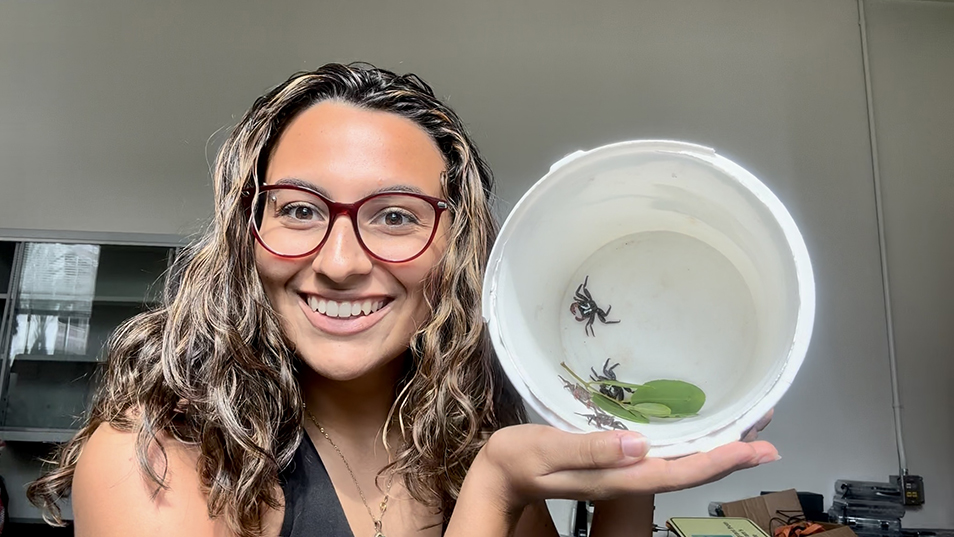Contact us
401 W. Kennedy Blvd.
Tampa, FL 33606-13490
(813) 253-3333
The growing invasion of Brazilian pepper trees in Tampa Bay is distressing native crabs to the point of cannibalism more than ever before.

Jessie Wahlers hypothesizes the growing invasion of Brazilian pepper trees in Tampa Bay is distressing native crabs to the point of cannibalism. Photo courtesy of Wahlers
The growing invasion of Brazilian pepper trees in Tampa Bay is distressing native crabs to the point of cannibalism more than ever before.
That’s the hypothesis of Jessie Wahlers ’25, a marine biology major studying Aratus pisonii, also known as the mangrove tree crab, a keystone species and a vital part of Florida’s natural ecosystem.
“They're one of the major connections between the water and the air when it comes to mangrove communities,” Wahlers said. “They contribute to so many different little things that add up to ‘Hey! Really important!’”
So when Wahlers learned from biology Assistant Teaching Professor Kristian Taylor that the shiny, black, tree-clinging creatures were chowing down on their own in greater numbers, she wanted to know why. She found four scholarly articles that mentioned the species’ cannibalism, but none explored why the behavior appears to be getting more prevalent.
“We did the preliminary research,” she said, and “it was like, ‘Oh yeah, by the way, I saw a couple eat each other.’
“It was an afterthought.”
According to the National Park Service, the Brazilian peppertree first invaded Florida in the middle of the 19th century, imported for use as Christmas decorations. Now they’re here all year.
Wahlers had a hunch about the crabs’ behavior and their changing habitat. So after securing the necessary permissions, she went to work.
She collected 45 crabs from Tampa Bay’s Gandy Beach, Picnic Island and Cypress Point Park and distributed them evenly into three GoPro-equipped, habitat-mimicking tanks set up in a campus lab: one full of invasive peppertree, one with native mangroves and one with both.
Wahlers first measured the crabs, determined their genders and numbered their backs with an oil-based Sharpie. She handled the crabs carefully.
“The larger ones (20-25 millimeters across), those guys got claws,” she said. “I found you have to grab them right at the edge where their abdomen and their top meet. Normally, I have longer nails — I found that helps because it's like a shield,” Wahlers said.
She’d also put sticks in their claws to keep them occupied.
She monitored the tanks and the resident crabs for 10 weeks and recorded her work.
Each Saturday, Wahler took a crab census. Then, survival of the fittest played out over the ensuing days. She took each week’s survivors back to the bay before restarting the cycle.
She noticed the attacks on each other seemed to be motivated by size — and more crabs perished in the peppertree-only tank. Sometimes, up to half of them would have been cannibalized.
“It's definitely causing more deaths. … It could be the nutrient difference, that there’s something with the nitrogen or carbon in the Brazilian peppertree leaves.”
Wahlers doesn’t want her research to stop at a science paper.
“I’d love to turn this into an awareness campaign,” Wahlers said. “Especially for Florida, one of the big issues is native plants versus invasive. It's messing with things — Come on!”
More UT News